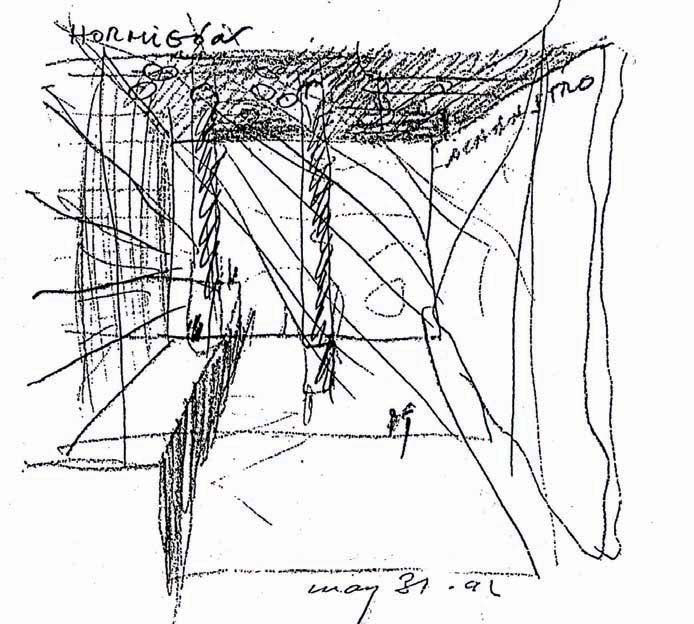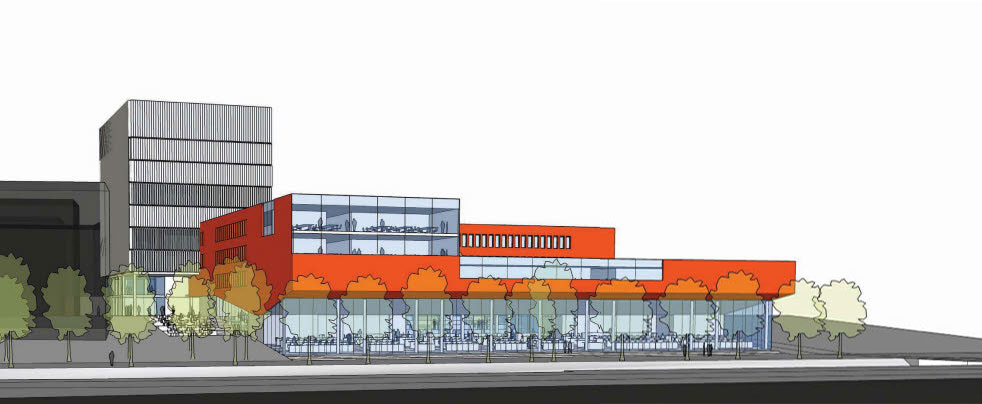TIP EYE HEIGHTS
Think carefully about eye heights and how they are translated into horizon levels; this will affect what is visible in the image.
The technique of perspective drawing is an ancient representational tool used to depict distance or spatial depth on a two-dimensional plane. There is a rich history of early perspectival drawing that eventually became subject to the consistent geometric, and subsequent mathematical, rules that we might recognize today. Perspective not only opened up new representational techniques, it was also a powerful way to see and to construct, fostering a new way of thinking and ordering space that became a powerful theme in later Western culture.
Today the persuasive power of perspectives persists: computer-generated perspective has become the single most powerful tool to communicate a project. Usurping the traditional artist’s impression, the digital perspective shows, with unerring certainty, how the project relates to its context externally and what the spaces will be like internally. Often photorealistic, these modern perspectives now play a central role in architectural visualization.
There are two fundamental observations embodied in perspective. First, that objects appear smaller in the distance than they do close up. Second, that objects appear to become foreshortened along the line of sight.
The geometry of perspective drawing starts with the idea of a picture plane—an abstract plane that is held up to the object in view—and vanishing points, the points on the horizon where parallel lines appear to converge. The number of vanishing points, which will depend on the viewing angle, will determine what kind of perspective is drawn. These are usually one-, two- or, more exceptionally, three-point linear perspectives.

Alberto Campo Baeza’s perspective sketch for the Caja General de Ahorros, Granada, Spain, shows how perspectives can be used as a way to think through early design stages.

This view by Crepain Binst shows the context for their school in Artevelde, Ghent, Belgium. There is an appropriate restraint to the drawing, which is built up from a simple model and transparent layers of tone and shadow.
A one-point perspective is perspective in its simplest form. It can be used when the main lines within the room or building are parallel or perpendicular to the line of sight, for example an interior view of a simple rectilinear room or a head-on view of an external façade.
A two-point perspective, on the other hand, is less static as an image and it allows a greater variety of viewpoints. It allows the viewer to be looking towards a corner of a room say, rather than remaining perpendicular to the main elements of the space. The room will now have two vanishing points (or potentially more) on the horizon, one for each set of parallel lines. When looking toward the corner of a room, the two walls would recede to respective vanishing points.
Finally a three-point perspective, which is more difficult to generate, is used to describe an additional vertical recession, as the building is seen from above or below.
Each of these perspectival grids can be constructed using basic computer-modeling software. This facilitates what can be a painstaking process by hand, though at the same time it is also relatively quick to accurately sketch in perspective. Whatever method is used, it is important that perspectives are not presented as the only illustrations of a final proposal, but are shown together with other drawings, as drivers in the creative process of thinking about the building as a whole.
Independently, the final perspective illustration can act more as a marketing tool than a creative contribution to our understanding of the building. New ways of embedding the idea of three-dimensional representations of settings will combine diverse projections with models and film or animation to make up for the over-reliance on one singular geometric construct.
Perspective sketches test ideas. They swiftly reveal a sense of scale, structure, and material. Sketching something three-dimensionally, regardless of how accurate the perspective is, opens up new ideas. Even at an early stage, the freely drawn perspective sketch drives the design process as it brings other drawings together; it is a vehicle for synthetic thinking about the project or space as a whole.
TIP USING PERSPECTIVES
Always use perspectives in conjunction with other drawings during the design process. Use perspectives as much to think through as to illustrate a final proposal.
